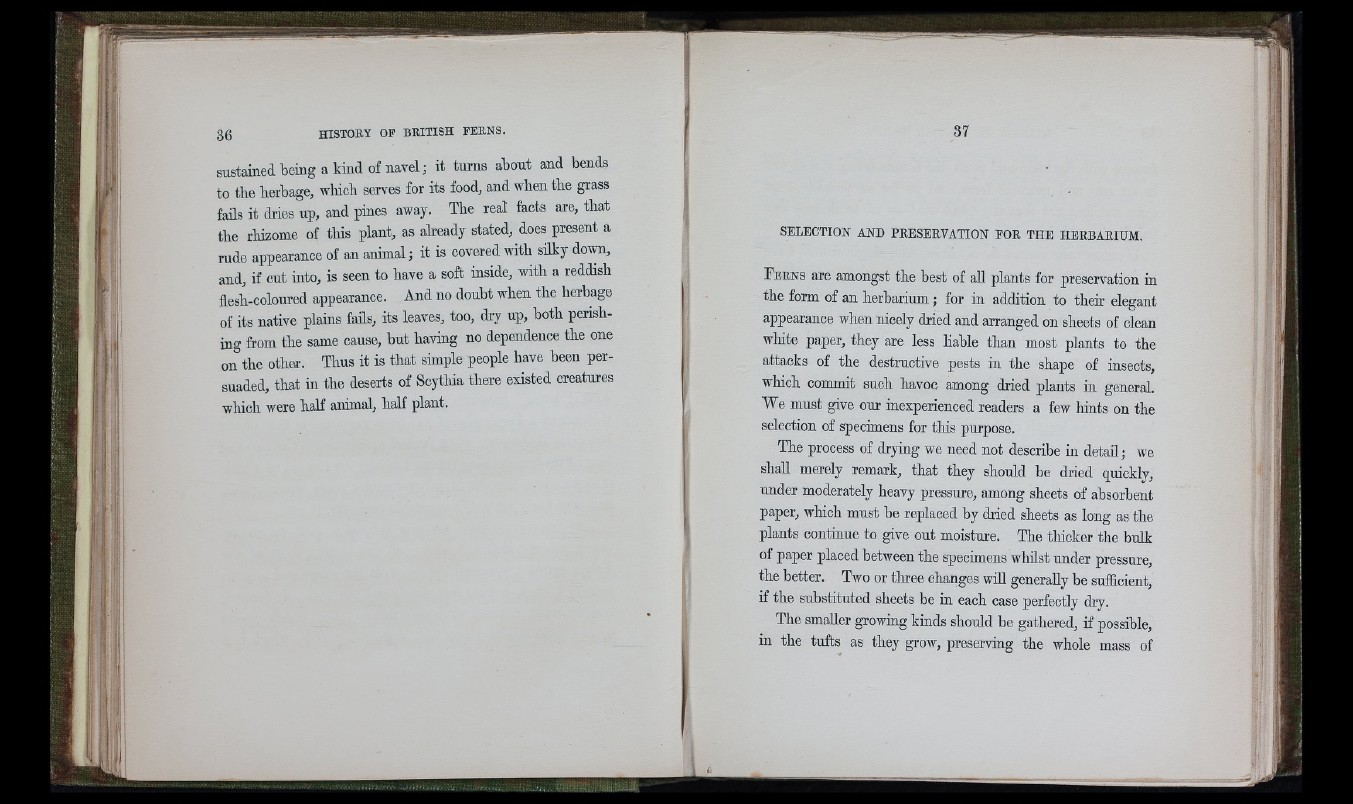
sustained being a kind of navel; it turns about and bends
to the herbage, which serves for its food, and when the grass
fails it dries up, and pines away. The real facts are, that
the rhizome of tliis plant, as already stated, does present a
rude appearance of an animal; it is covered with silky down,
and, if cut into, is seen to have a soft inside, with a reddish
flesh-coloured appearance. And no doubt when the herbage
of its native plains fails, its leaves, too, dry up, both perishing
from the same cause, hut having no dependence the one
on the other. Thus it is that simple people have been persuaded,
that in the deserts of Scythia there existed creatures
which were half animal, half plant.
SELECTION AND PRESERVATION FOE THE HERBARIUM.
P erns are amongst the best of all plants for preservation in
the form of an herbarimn; for in addition to their elegant
appearance when nicely dried and arranged on sheets of clean
white paper, they are less liable than most plants to the
attacks of the destructive pests in the shape of insects,
which commit such havoc among dried plants in general.
We must give our inexperienced readers a few hints on the
selection of specimens for this purpose.
The process of drying we need not describe in detail; we
shall merely remark, that they should be dried quickly,
under moderately heavy pressure, among sheets of absorbent
paper, which must be replaced by dried sheets as long as the
plants continue to give out moisture. The thicker the bulk
of paper placed between the specimens whilst under pressure,
the better. Two or three changes will generally be suificient,
if the substituted sheets be in each case perfectly dry.
The smaller growing kinds should he gathered, if possible,
in the tufts as they grow, preserving the whole mass of